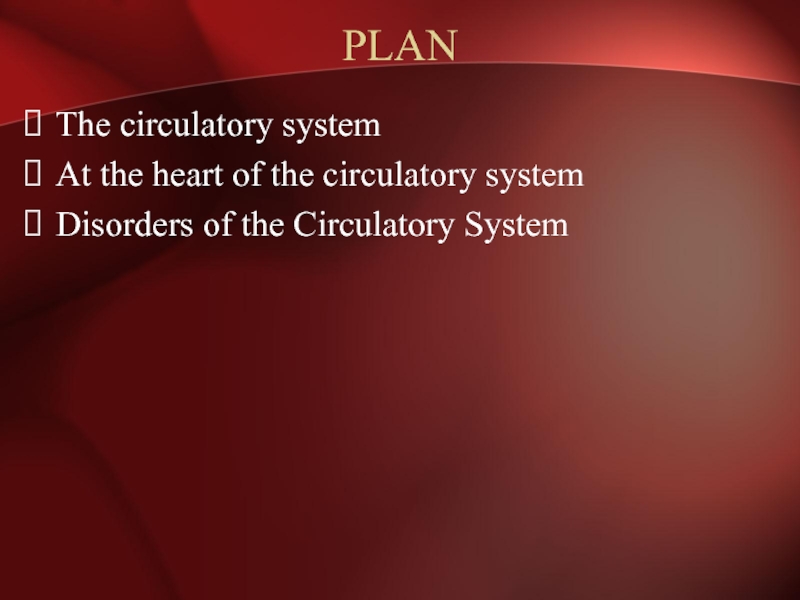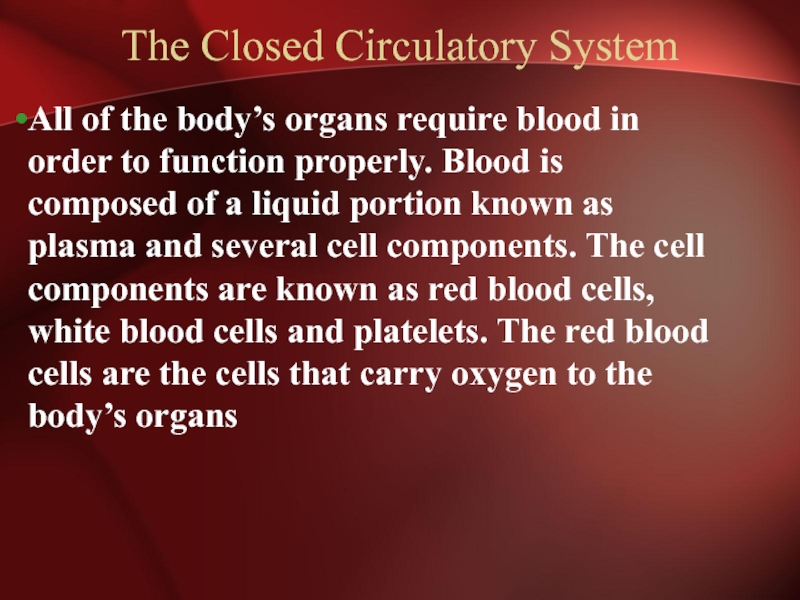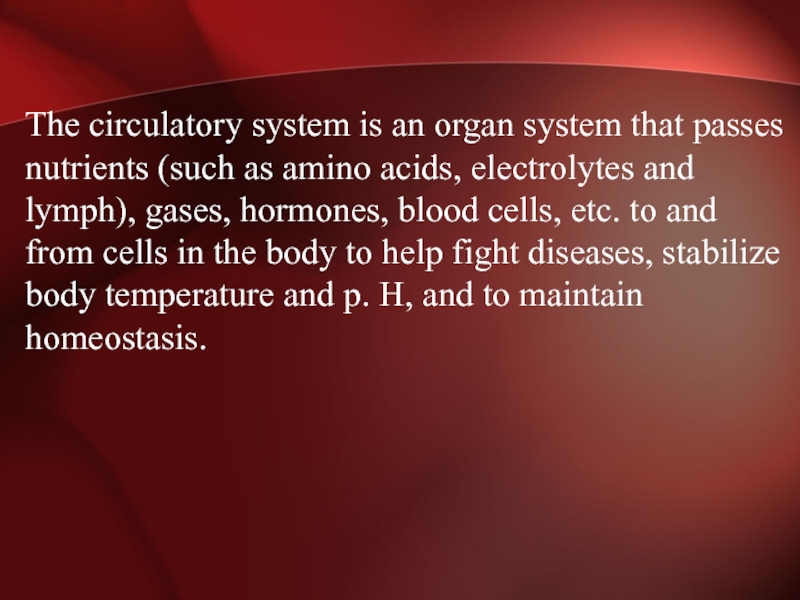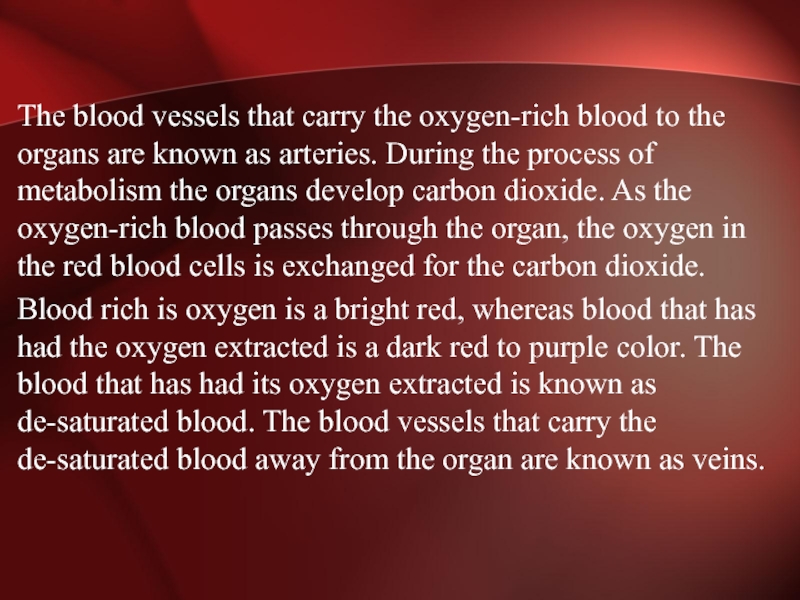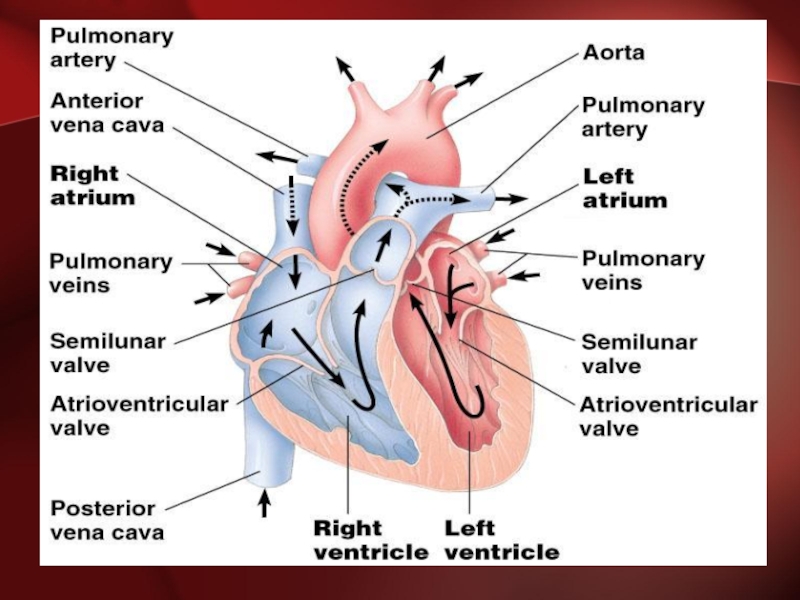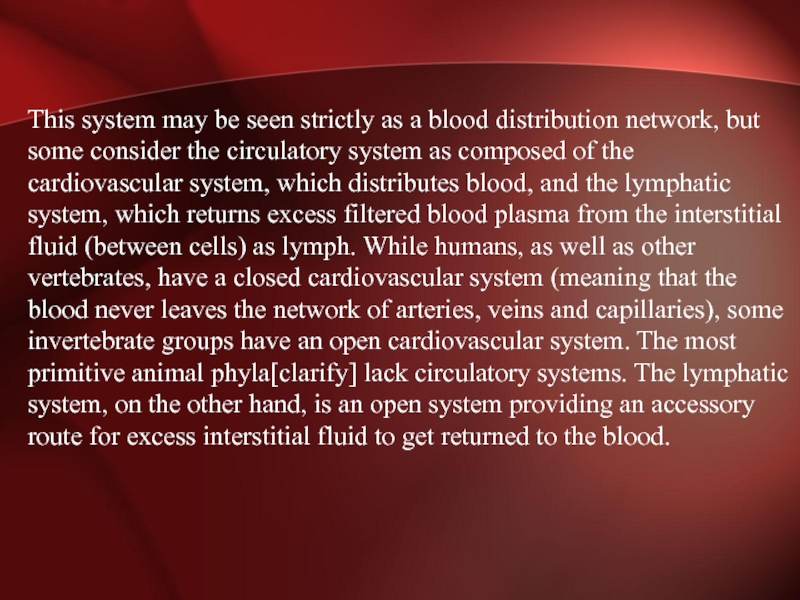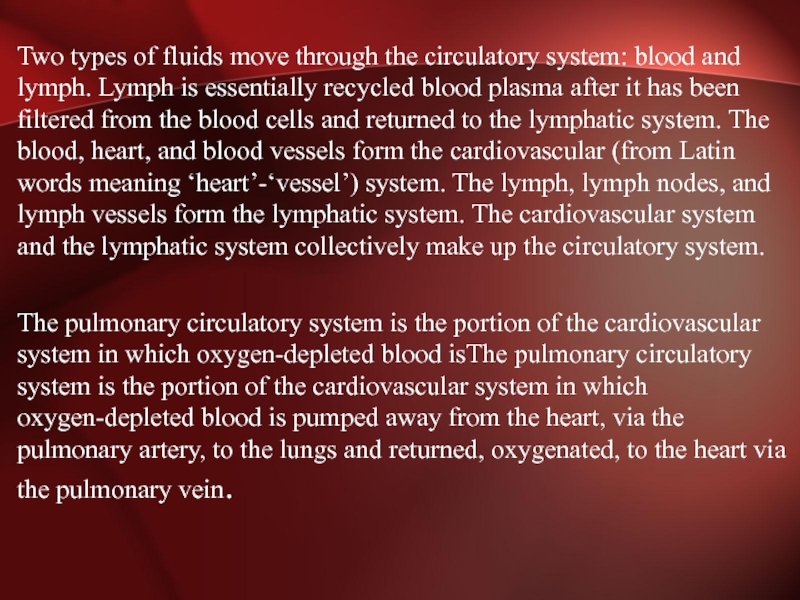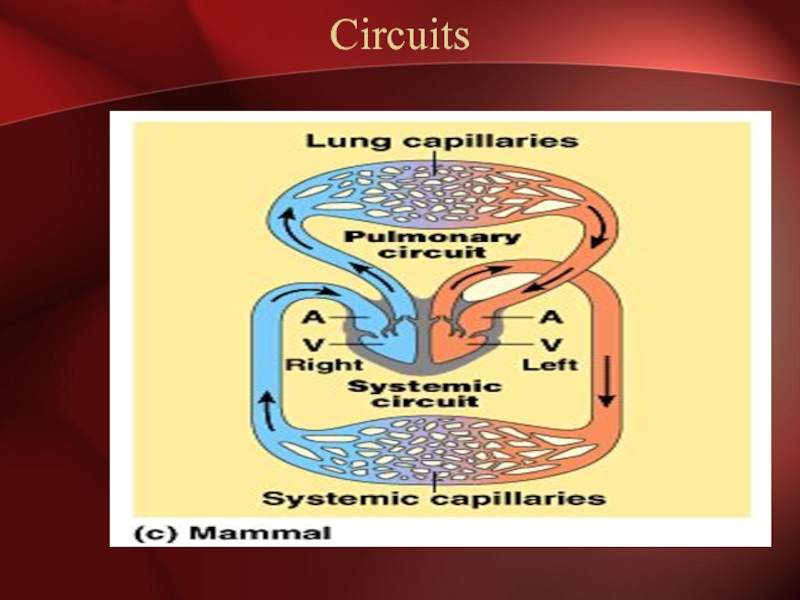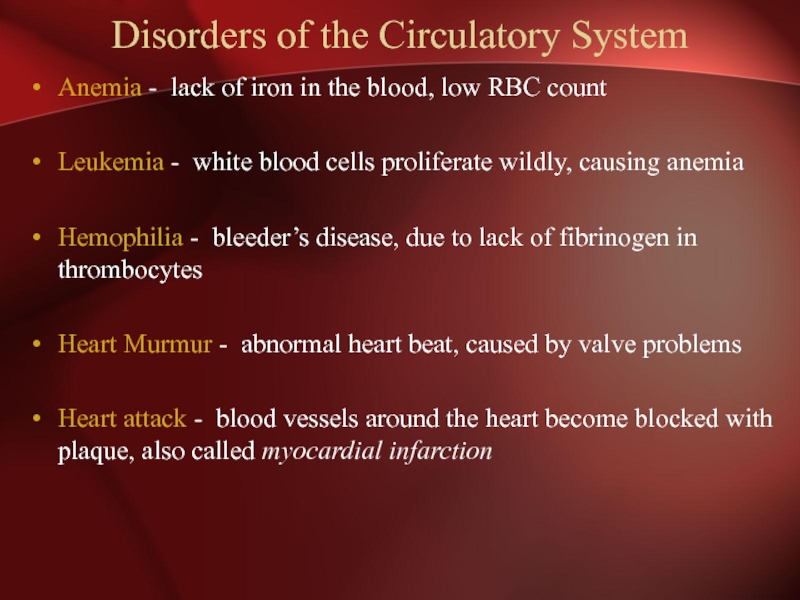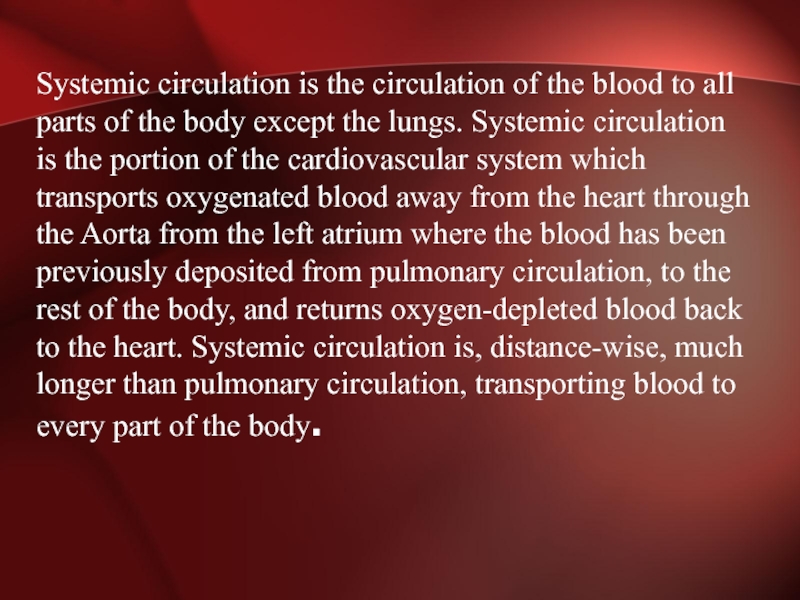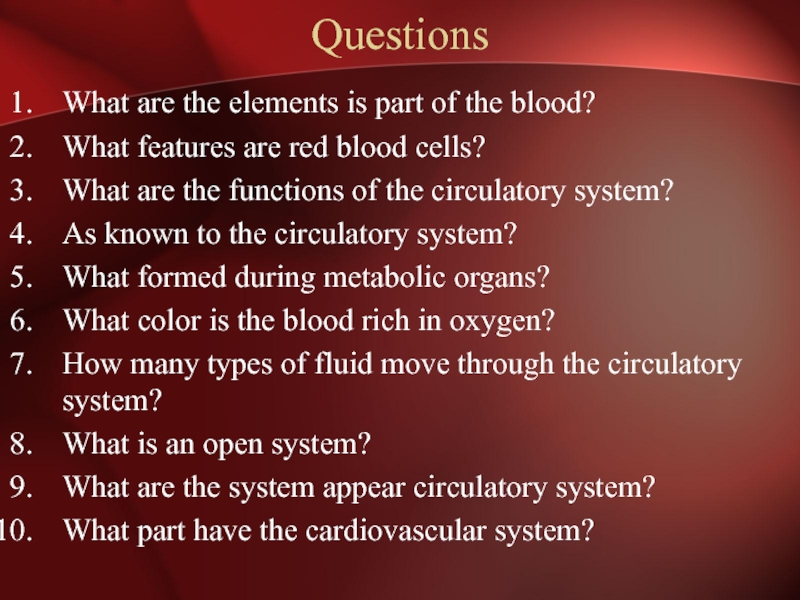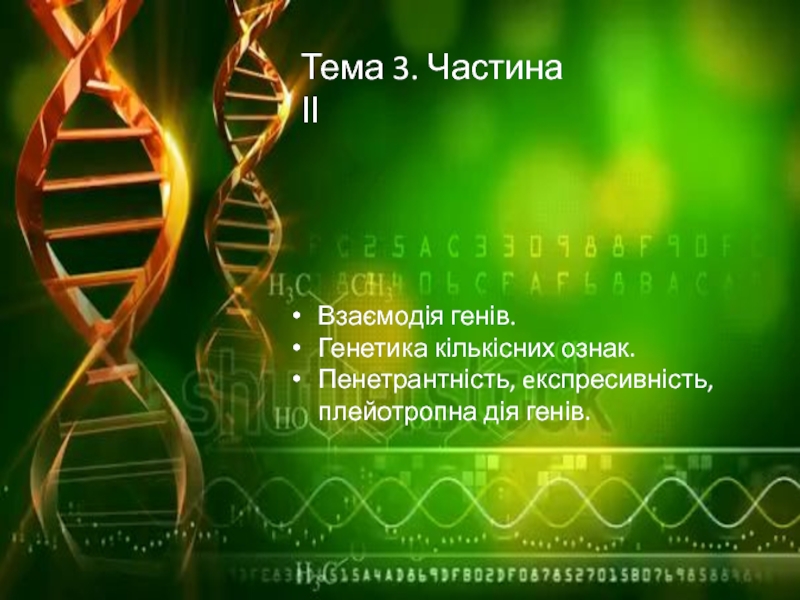- Главная
- Разное
- Дизайн
- Бизнес и предпринимательство
- Аналитика
- Образование
- Развлечения
- Красота и здоровье
- Финансы
- Государство
- Путешествия
- Спорт
- Недвижимость
- Армия
- Графика
- Культурология
- Еда и кулинария
- Лингвистика
- Английский язык
- Астрономия
- Алгебра
- Биология
- География
- Детские презентации
- Информатика
- История
- Литература
- Маркетинг
- Математика
- Медицина
- Менеджмент
- Музыка
- МХК
- Немецкий язык
- ОБЖ
- Обществознание
- Окружающий мир
- Педагогика
- Русский язык
- Технология
- Физика
- Философия
- Химия
- Шаблоны, картинки для презентаций
- Экология
- Экономика
- Юриспруденция
The Circulatory System презентация
Содержание
- 1. The Circulatory System
- 2. PLAN The circulatory system At the
- 3. The Closed Circulatory System All of the
- 4. The circulatory system is an organ
- 5. The blood vessels that carry the
- 7. This system may be seen strictly
- 8. Two types of fluids move through the
- 10. Circuits
- 11. Disorders of the Circulatory System Anemia -
- 13. Systemic circulation is the circulation of the
- 14. Questions What are the elements is part
Слайд 1Kazakh-Russian Medical University
Independent Work
Theme:The Circulatory System
Done by:Sagatova Madina.
Faculty:GM
Group:104А
Checked by:Kosbatyrova N.B
Слайд 2PLAN
The circulatory system
At the heart of the circulatory system
Disorders of
the Circulatory System
Слайд 3The Closed Circulatory System
All of the body’s organs require blood in
order to function properly. Blood is composed of a liquid portion known as plasma and several cell components. The cell components are known as red blood cells, white blood cells and platelets. The red blood cells are the cells that carry oxygen to the body’s organs
Слайд 4
The circulatory system is an organ system that passes nutrients (such
as amino acids, electrolytes and lymph), gases, hormones, blood cells, etc. to and from cells in the body to help fight diseases, stabilize body temperature and p. H, and to maintain homeostasis.
Слайд 5
The blood vessels that carry the oxygen-rich blood to the organs
are known as arteries. During the process of metabolism the organs develop carbon dioxide. As the oxygen-rich blood passes through the organ, the oxygen in the red blood cells is exchanged for the carbon dioxide.
Blood rich is oxygen is a bright red, whereas blood that has had the oxygen extracted is a dark red to purple color. The blood that has had its oxygen extracted is known as de-saturated blood. The blood vessels that carry the de-saturated blood away from the organ are known as veins.
Blood rich is oxygen is a bright red, whereas blood that has had the oxygen extracted is a dark red to purple color. The blood that has had its oxygen extracted is known as de-saturated blood. The blood vessels that carry the de-saturated blood away from the organ are known as veins.
Слайд 7
This system may be seen strictly as a blood distribution network,
but some consider the circulatory system as composed of the cardiovascular system, which distributes blood, and the lymphatic system, which returns excess filtered blood plasma from the interstitial fluid (between cells) as lymph. While humans, as well as other vertebrates, have a closed cardiovascular system (meaning that the blood never leaves the network of arteries, veins and capillaries), some invertebrate groups have an open cardiovascular system. The most primitive animal phyla[clarify] lack circulatory systems. The lymphatic system, on the other hand, is an open system providing an accessory route for excess interstitial fluid to get returned to the blood.
Слайд 8Two types of fluids move through the circulatory system: blood and
lymph. Lymph is essentially recycled blood plasma after it has been filtered from the blood cells and returned to the lymphatic system. The blood, heart, and blood vessels form the cardiovascular (from Latin words meaning ‘heart’-‘vessel’) system. The lymph, lymph nodes, and lymph vessels form the lymphatic system. The cardiovascular system and the lymphatic system collectively make up the circulatory system.
The pulmonary circulatory system is the portion of the cardiovascular system in which oxygen-depleted blood isThe pulmonary circulatory system is the portion of the cardiovascular system in which oxygen-depleted blood is pumped away from the heart, via the pulmonary artery, to the lungs and returned, oxygenated, to the heart via the pulmonary vein.
The pulmonary circulatory system is the portion of the cardiovascular system in which oxygen-depleted blood isThe pulmonary circulatory system is the portion of the cardiovascular system in which oxygen-depleted blood is pumped away from the heart, via the pulmonary artery, to the lungs and returned, oxygenated, to the heart via the pulmonary vein.
Слайд 11Disorders of the Circulatory System
Anemia - lack of iron in the
blood, low RBC count
Leukemia - white blood cells proliferate wildly, causing anemia
Hemophilia - bleeder’s disease, due to lack of fibrinogen in thrombocytes
Heart Murmur - abnormal heart beat, caused by valve problems
Heart attack - blood vessels around the heart become blocked with plaque, also called myocardial infarction
Leukemia - white blood cells proliferate wildly, causing anemia
Hemophilia - bleeder’s disease, due to lack of fibrinogen in thrombocytes
Heart Murmur - abnormal heart beat, caused by valve problems
Heart attack - blood vessels around the heart become blocked with plaque, also called myocardial infarction
Слайд 13Systemic circulation is the circulation of the blood to all parts
of the body except the lungs. Systemic circulation is the portion of the cardiovascular system which transports oxygenated blood away from the heart through the Aorta from the left atrium where the blood has been previously deposited from pulmonary circulation, to the rest of the body, and returns oxygen-depleted blood back to the heart. Systemic circulation is, distance-wise, much longer than pulmonary circulation, transporting blood to every part of the body.
Слайд 14Questions
What are the elements is part of the blood?
What features are
red blood cells?
What are the functions of the circulatory system?
As known to the circulatory system?
What formed during metabolic organs?
What color is the blood rich in oxygen?
How many types of fluid move through the circulatory system?
What is an open system?
What are the system appear circulatory system?
What part have the cardiovascular system?
What are the functions of the circulatory system?
As known to the circulatory system?
What formed during metabolic organs?
What color is the blood rich in oxygen?
How many types of fluid move through the circulatory system?
What is an open system?
What are the system appear circulatory system?
What part have the cardiovascular system?

